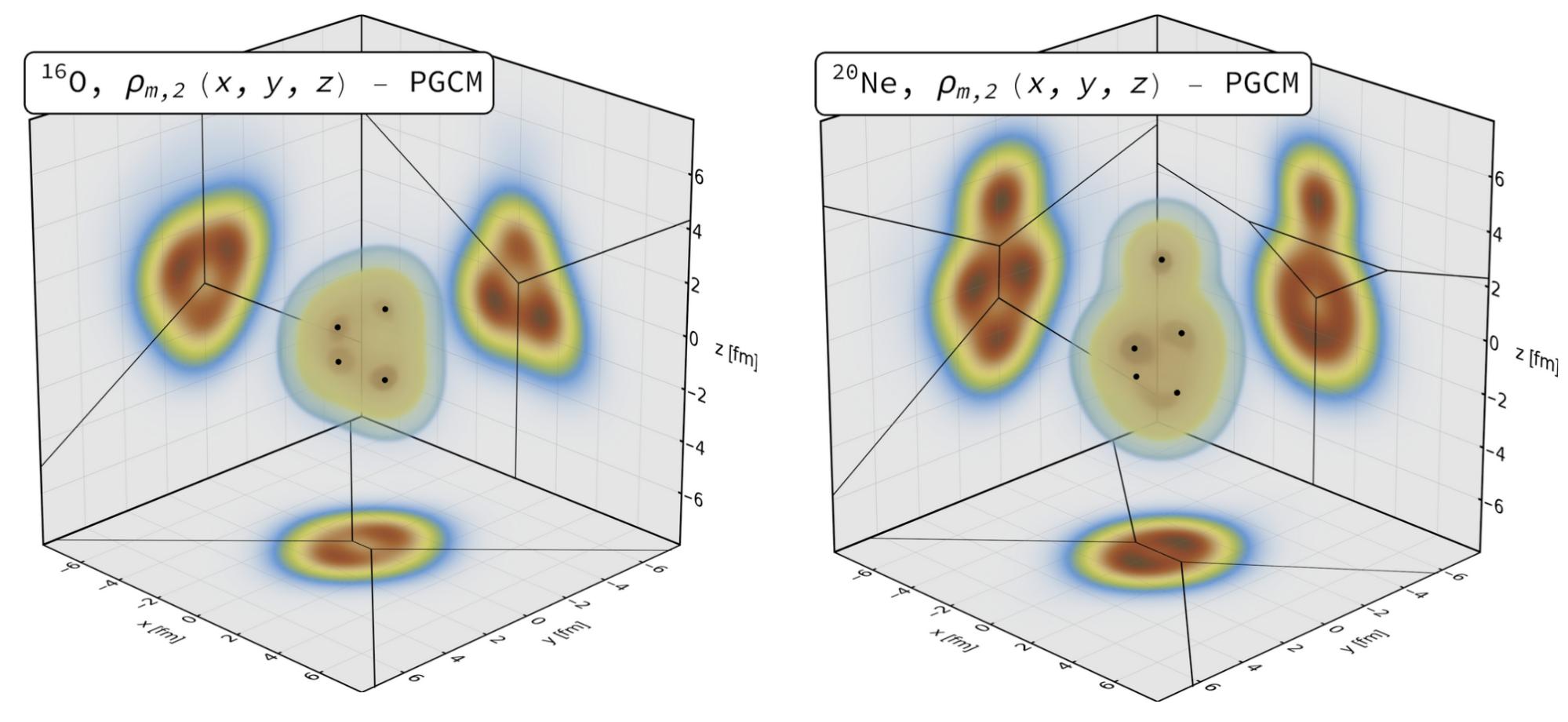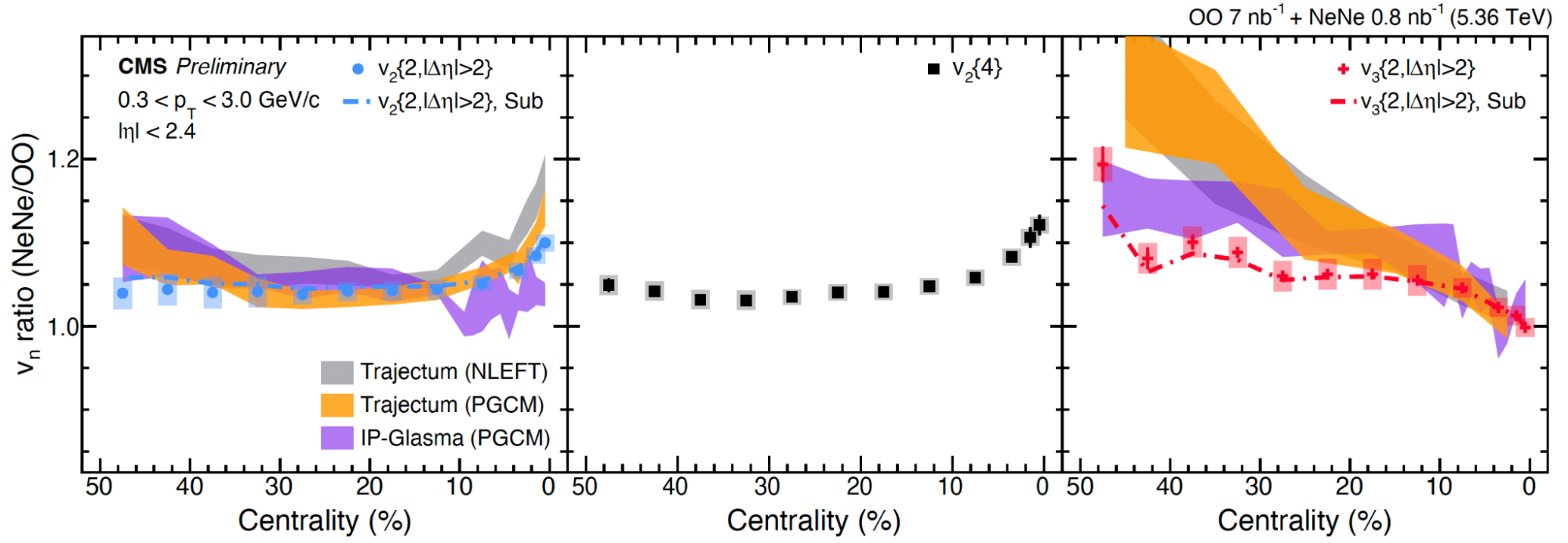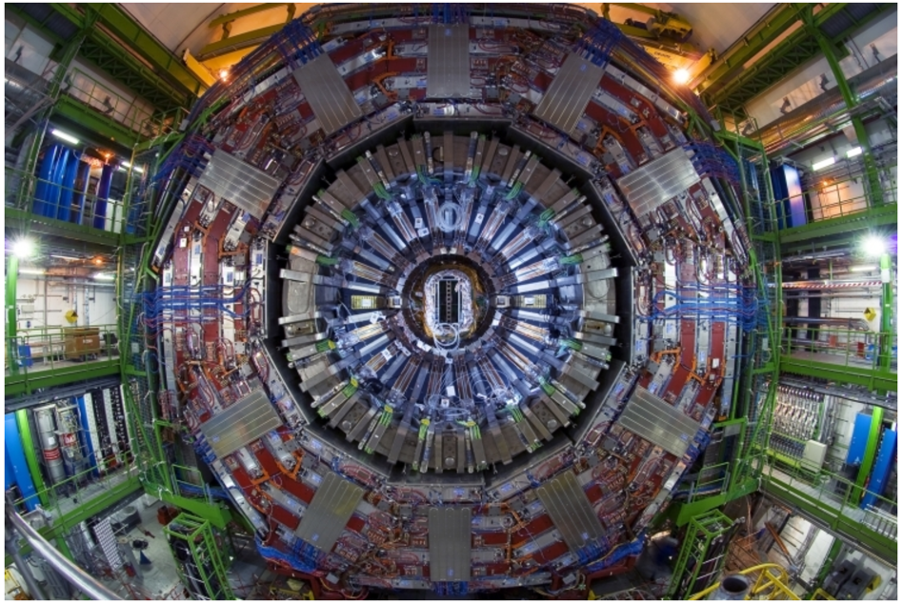
CMS observes collective motion of particles in light-ion collisions, providing robust evidence of how initial nuclear geometry maps to final-state flow.
For the first time, the CMS experiment has measured how particles flow in collisions of oxygen-oxygen (OO) and neon-neon (NeNe) ions at the Large Hadron Collider (LHC). These small, but powerful, collisions reveal clear signs of collective behavior, similar to what is seen in much larger systems such as lead-lead (PbPb) collisions. The results provide robust evidence for how the initial geometry of colliding nuclei translates into final particle flow – a key step toward understanding collectivity in small collision systems and its possible connection to a hot and exotic state of matter called the quark-gluon plasma (QGP).
What is collective flow, and why do we care?
When two atomic nuclei smash together at nearly the speed of light, thousands of new particles are created. Instead of flying out randomly, these particles often emerge with a preferred direction, a phenomenon known as collective flow. Physicists quantify this using “flow harmonics” (v2, v3, etc.), which describe whether the particle distribution looks more elliptical, triangular, or another shape.
In large nuclei like lead, flow patterns are well understood, with the QGP acting as an almost perfect liquid in which quarks and gluons, the building blocks of protons and neutrons, move freely. But does similar behavior appear in smaller collisions, where fewer particles are produced? Answering this question is crucial to establishing how collective behavior emerges and whether it is driven by the same physics as in large heavy-ion systems.
Why oxygen and neon?
Oxygen and neon are particularly useful systems because their initial-state geometry is well constrained by modern nuclear theory. Unlike other small systems (such as proton-nucleus), where the initial state carries large uncertainties, OO and NeNe provide a clean theoretical baseline. Comparing two systems with similar masses, but different geometries, makes it possible to map how the initial shape drives the observed flow. Moreover, because the two systems are so similar in size, many uncertainties in the later stages of the collision cancel out when taking ratios of their flow signals.

Above : Shapes of (left) oxygen and (right) neon nuclei as predicted from theory.
What did CMS find?
CMS measured two key flow harmonics:
- Elliptic flow (v2), linked to the almond-shaped overlap of the colliding nuclei.
- Triangular flow (v3), sensitive to fluctuations in the initial energy density.
They are studied as a function of centrality, which characterizes how much the colliding nuclei overlap. The v2 values in OO and NeNe behave much like those in PbPb collisions: they rise toward mid-central collisions, where the two colliding nuclei half-overlap, and then decrease in the most central events, where the two colliding nuclei completely overlap. The v3 values, however, increase steadily when going from no overlap to full overlap – a behavior not seen in PbPb. This trend reflects differences in the evolution of collision systems with different sizes.
When comparing the two systems directly, CMS found that NeNe collisions show larger v2 than OO in collisions with a bigger overlap, while the v3 ratio decreases. These results are well described by models that take initial-state inputs into account, showing a robust mapping between initial geometry and collective flow in small systems.

Above : Comparison of the ratios (NeNe/OO) of measured flow patterns with model calculations, indicating evidence of deformed nuclear structure of Ne nucleus.
Why is this important?
This study provides clear evidence that collective flow in small systems reflects the hydrodynamic response to a well-understood initial geometry. It will significantly reduce one of the largest uncertainties in interpreting small-system data – whether the observed collectivity arises from the same QGP-like dynamics as in large heavy-ion collisions.
Looking ahead
With the currently collected dataset, CMS can already perform more detailed flow studies, enabling systematic and precise tests of the bulk properties of small collision systems. These measurements will be essential to firmly establish how collective behavior emerges and to what extent it shares the same origin as in larger systems.
Written by: Aryaa Dattamunsi and Zhenyu Chen, for the CMS Collaboration
Edited by: Muhammad Ansar Iqbal
Read more about these results:
-
CMS Physics Analysis Summary (HIN-25-009): "Collective flow in OO and NeNe collisions at √sNN = 5.36 TeV"
-
@CMSExperiment on social media: Bluesky - Facebook - Instagram - LinkedIn - TikTok - Twitter/X - YouTube

